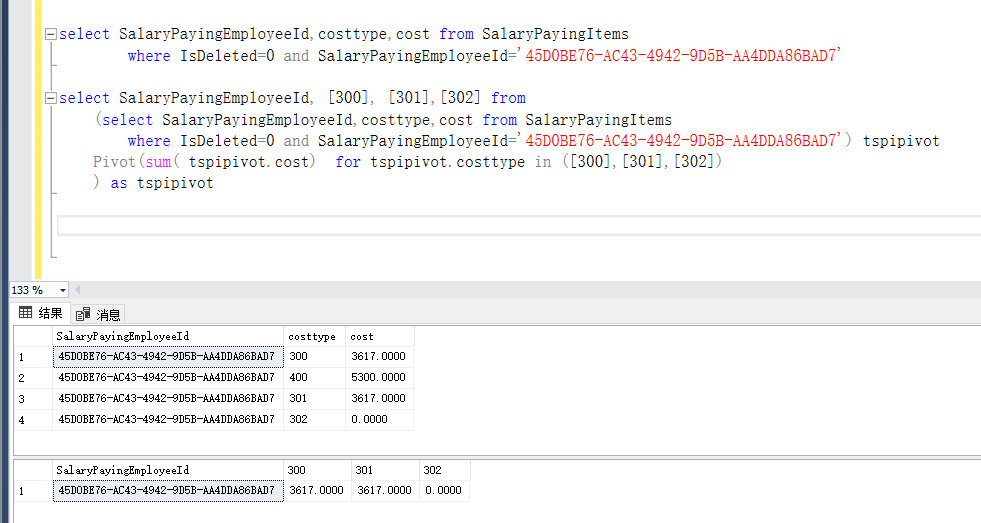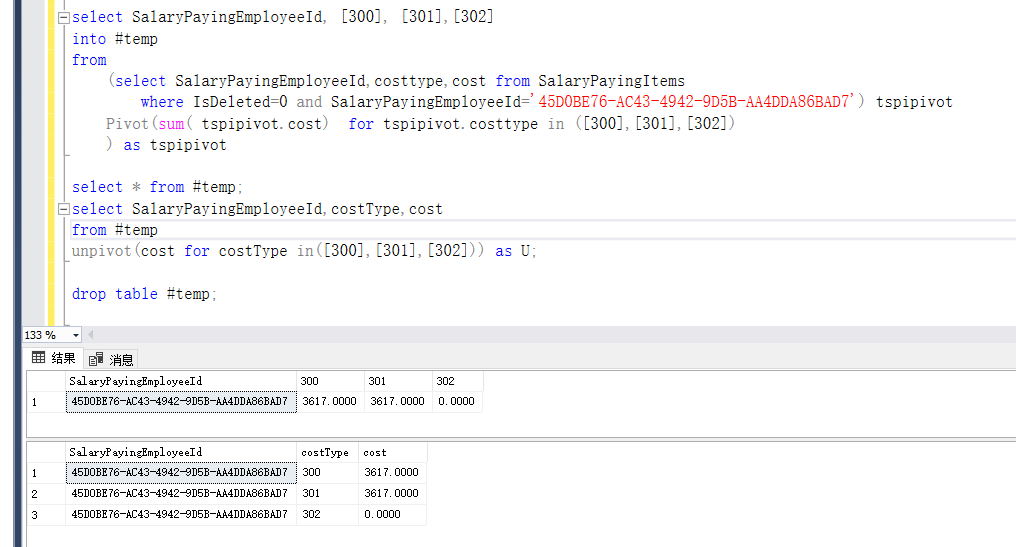1.sql语句查询顺序
select ...
from ...
where ...
group by ...
having ...
order by ...
sql语句执行顺序
from
where
group by
having
select
over
distinct
top
order by
注意:1.如果引用不在group by列表中出现的属性,而且也没有将其作为group by子句之后的任何子句中聚合函数的输入,sql server引擎将会报错
2.支持order by子句指定没有在select子句中出现过的元素,但是,如果指定了distinct后,order by子句就被限制为只能选取在select列表中出现的那些元素。
2.over支持的四种排名函数:row_number、rank、dense_rank、ntile
select orderid,custid,val,
row_number() over(order by val) as rownum,
rank() over(order by val) as rank,
dense_rank() over(order by val) as dense_rank,
ntile(1000) over(order by val) as ntile
from salas.ordervalues
order by val;
看下区别:row_number 所有的数据顺序排序
rank 顺序排序,遇到同名的,则相同排名,会空出下一个排名
dense_rank 顺序排序,遇到同名的,则相同排名,但不会空出下一个排名
ntile 将所有的瞬间按顺序划分为几块,每一块进行排序
查询效果示例:

3.运算符优先级:
1、()
2、 *、/、%
3、 +、-
4、比较运算符
5、not
6、and
7、between、in、like、or
8、=
4.CASE表达式:
示例:
select
case IsDeleted
when 1 then '已删除'
when 0 then '未删除'
else ''
end as idName,
case
when id < 100 then 'less then 100'
when id between 100 and 300 then 'between 100 and 300'
when id > 300 then 'more then 300'
else 'unknown'
end as idType
from dbo.SystemUsers
order by UserName;
5.join(ANSI标准)
JOIN 三种联接:
交叉联接---笛卡尔积 cross join
内联接---笛卡尔积、过滤 inner join
外联接---笛卡尔积、过滤、添加外部行 left join /right join
全连接--显示符合条件的数据行,同时显示左右不符合条件的数据行,相应的左右两边显示NULL,即显示左连接、右连接和内连接的并集 full join
6.使用PIVOT运算符进行透视转换
select SalaryPayingEmployeeId, [300], [301],[302] from
(select SalaryPayingEmployeeId,costtype,cost from SalaryPayingItems
where IsDeleted=0 and SalaryPayingEmployeeId='45D0BE76-AC43-4942-9D5B-AA4DDA86BAD7') tspipivot
Pivot(sum( tspipivot.cost) for tspipivot.costtype in ([300],[301],[302])
) as tspipivot
示例:

7.使用unpivot运算符进行逆透视转换
select SalaryPayingEmployeeId,costType,cost
from #temp
unpivot(cost for costType in([300],[301],[302])) as U;
示例:采用刚才转换后的表再转回去

8.临时表
可以使用临时表的场合:
1、需要把中间结果临时保存起来,以供以后查询这些临时数据
2、需要多次访问一个开销昂贵的处理结果
示例:此处是一个简单查询,仅展示临时表的操作
select id,name,UserName
into #temp
from dbo.SystemUsers where Name like '%a%';
select * from dbo.#temp;
drop table #temp;
全局临时表采用两个##